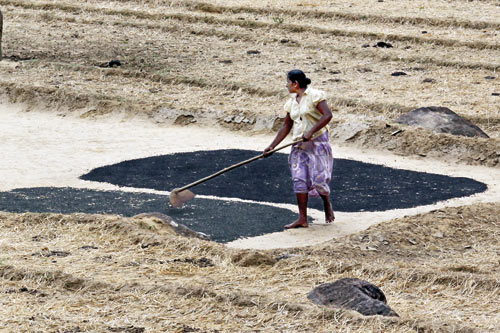Dilemma of continuous funding of Sri Lankan NGOs and not-for-profit organisations

Farming
Funding for development work in Sri Lanka is seen steadily declining during the last decade, except for short bursts during a few post-Tsunami years and briefly for the North, post 2009. Canada, UK and Netherlands amongst others have refrained from all state funding for Sri Lankan NGOs, whilst major INGOs such as Novib and Cordaid which were funding local NGO’s too have followed suit. As a result many local NGOs have either closed down or downsized significantly. The most affected are Sarvodaya, which had a staff strength of over 3,000 in 1987 and now having less than 600 and Sewalanka with over 800 staff then, being reduced to less than 300 currently. There is no difference with the fate of smaller NGOs.
Palm Foundation which was the best and largest in Nuwara Eliya, serving the plantation community with a budget of Rs.56 million in 2015 has only Rs.29 million for 2016. Similarly Saviya, a leading NGO in Galle which had over Rs.80 million previously, has only Rs.28 million now. ‘Future in Your Hands’, a leading NGO in Badulla had a budget of Rs.90 million a year in 2011 while this year it has only Rs.22 million. Funding in the North despite major needs has dropped in the past two to three years after the war and NGOs working there are struggling to cope with the huge, still unfulfilled need for humanitarian assistance. This is specifically so in the case of livelihoods as very little capital was available to families wanting to recommence farming, fishing, small businesses and services, ahead of retrieving their land back.
Well governed and managed NGO’s in Sri Lanka such as CandleAid Lanka, Alzheimer Foundation, Foundation for Goodness, Berendina, Women in Need, Association of Social Development (Voluntary), Ceylon Deaf and Blind School, Practical Action, Palm Foundation, Peace, Dharmavani Foundation, Suriya, Navajeevana, Indecos, etc are now facing funding crises due to less institutional funding . Besides NGOs there are also voluntary organisations with little or no staff who do amazing work. These too need funding. Finally some corporates have initiated very good CSR work for which they seek additional funding from pubic.
The reasons for this major drop in development funding can be further attributed to:
1. Western countries recognizing Sri Lanka as a mid-income nation and dropping it from the limited number of countries they can support
2. Priority being given to major man made (such as the current Syrian refugee) crises or natural disasters in developing countries as well as those in their own backyards,
3. The dislike of NGOs by the previous government due to a few of them sympathising with separatist politics.
Here are just a few examples of the work done by NGOs:
Revived Sharmadana spirit and cohesive work in rural villages (Sarvodaya)
Promoted social mobilisation creating 1000s of community associations that work together to improve living conditions as well as rural environment
Initiated pre-schools in rural areas (Sarvodaya)
Improved water sanitation and care for elders in plantations (Palm, Berendina, World Vision, etc)
Initiated best practice, collateral free micro finance in the island (SEEDS)
Initiated micro finance for plantation community (Berendina)
Fought for the entitlements and rights of the poor and marginalized groups such as the handicapped
Filled gaps in the state’s ability to provide services to people
Introduced innovations such as renewable energy-Micro, Hydro, low-cost technical equipment (ITDG)
Challenged the dominant development paradigm when it was not delivering equitable benefits to all (CPA, EFL, ITDG)
Initiated programmes to reduce pain due to Alzheimer, cataracts, cancer, mental health, Cerebral Palsy, Crohn’s disease, etc
Initiated programmes to support elders long before the government stepped in (Helpage, etc)
In the forefront of protecting the environment
Western donors drastically reduced development aid for Sri Lanka without creating or recommending alternatives to funding mechanisms they had helped with, in continuing the beneficiary work initiated. The void created thereby, is a need that should be addressed without delay.
Crowd funding platforms evolving in India since 1999 to support deserving causes addressed by NGO work such as ‘GiveIndia’ appear to be an inventive programme developed to address this need. Whilst global platforms such as Global Giving are supporting the deserving work of NGOs in a range of countries with significant funds, Sri Lanka however, does not have a crowd funding platform to assist deserving causes addressed by NGOs or other deserving entities to continue their good work, until now! Give2Lanka intends meeting this need with a firm and sustainable long term plan.
(The writer is a founder of Give2Lanka and could be contacted on
dulande@gmail.com)


